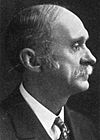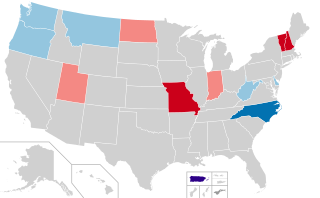
United States gubernatorial elections were held on November 8, 2016, in 12 states and two territories. The last regular gubernatorial elections for nine of the 12 states took place in 2012. The last gubernatorial elections for New Hampshire, Oregon, and Vermont took place in 2014, as Oregon held a special election due to the resignation of Governor John Kitzhaber, while the governors of New Hampshire and Vermont both serve two-year terms. The 2016 gubernatorial elections took place concurrently with several other federal, state, and local elections, including the presidential election, Senate, and House elections.
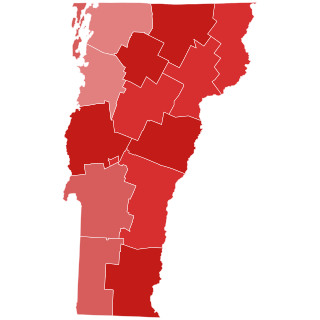
The 1930 Vermont gubernatorial election took place on November 4, 1930. Incumbent Republican John E. Weeks did not run for re-election to a third term as Governor of Vermont. Republican candidate Stanley C. Wilson defeated Democratic candidate Park H. Pollard to succeed him.

The 1928 Vermont gubernatorial election took place on November 6, 1928. Incumbent Republican John E. Weeks ran successfully for re-election to a second term as Governor of Vermont, defeating Democratic candidate Harry C. Shurtleff, an attorney. Weeks, who sought an exception to the Vermont Republican Party's "Mountain Rule", was the first Vermont Governor elected to a second two-year term.

The 1924 Vermont gubernatorial election took place on November 4, 1924. Incumbent Republican Redfield Proctor Jr., per the "Mountain Rule", did not run for re-election to a second term as Governor of Vermont. Republican candidate Franklin S. Billings defeated Democratic candidate Fred C. Martin to succeed him.
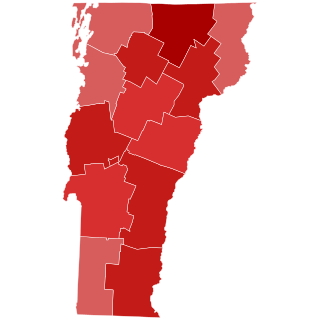
The 1922 Vermont gubernatorial election took place on November 7, 1922. Incumbent Republican James Hartness, per the "Mountain Rule", did not run for re-election to a second term as Governor of Vermont. Republican candidate Redfield Proctor Jr. defeated Democratic candidate John Holmes Jackson to succeed him.

The 1920 Vermont gubernatorial election took place on November 2, 1920. Incumbent Republican Percival W. Clement, per the "Mountain Rule", did not run for re-election to a second term as Governor of Vermont. Republican candidate James Hartness defeated Democratic candidate Fred C. Martin to succeed him.

The 1918 Vermont gubernatorial election took place on November 5, 1918. Incumbent Republican Horace F. Graham, per the "Mountain Rule", did not run for re-election to a second term as Governor of Vermont. Republican candidate Percival W. Clement defeated Democratic candidate William B. Mayo to succeed him.

The 1916 Vermont gubernatorial election took place on November 7, 1916. Incumbent Republican Charles W. Gates, per the "Mountain Rule", did not run for re-election to a second term as Governor of Vermont. Republican candidate Horace F. Graham defeated Democratic candidate William B. Mayo to succeed him.

The 1914 Vermont gubernatorial election took place on November 3, 1914. Incumbent Republican Allen M. Fletcher, per the "Mountain Rule", did not run for re-election to a second term as Governor of Vermont. Republican candidate Charles W. Gates defeated Democratic candidate Harland B. Howe and Progressive candidate Walter J. Aldrich to succeed him.

The 1912 Vermont gubernatorial election took place on September 3, 1912. Incumbent Republican John A. Mead, per the "Mountain Rule", did not run for re-election to a second term as Governor of Vermont. Republican candidate Allen M. Fletcher defeated Democratic candidate Harland B. Howe and Progressive candidate Fraser Metzger to succeed him. Since no candidate won a majority of the popular vote, the election was decided and Fletcher was elected by the Vermont General Assembly in accordance with the state constitution.

The 1910 Vermont gubernatorial election took place on September 6, 1910. Incumbent Republican George H. Prouty, per the "Mountain Rule", did not run for re-election to a second term as Governor of Vermont. Republican candidate John A. Mead defeated Democratic candidate Charles D. Watson to succeed him.

The 1908 Vermont gubernatorial election took place on September 1, 1908. Incumbent Republican Fletcher D. Proctor, per the "Mountain Rule", did not run for re-election to a second term as Governor of Vermont. Republican candidate George H. Prouty defeated Democratic candidate, Burlington mayor James Edmund Burke to succeed him.

The 1904 Vermont gubernatorial election took place on September 6, 1904. Incumbent Republican John G. McCullough, per the "Mountain Rule", did not run for re-election to a second term as Governor of Vermont. Republican candidate Charles J. Bell defeated Democratic candidate Eli H. Porter to succeed him.
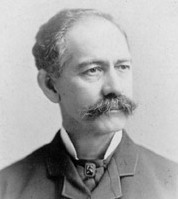
The 1902 Vermont gubernatorial election took place on September 2, 1902. Incumbent Republican William W. Stickney, per the "Mountain Rule", did not run for re-election to a second term as Governor of Vermont. Republican candidate John G. McCullough defeated Local Option candidate Percival W. Clement and Democratic candidate Felix W. McGettrick to succeed him. Since no candidate won a majority of the popular vote, the election was decided and McCullough was elected by the Vermont General Assembly in accordance with the state constitution.

The 1900 Vermont gubernatorial election took place on September 4, 1900. Incumbent Republican Edward C. Smith, per the "Mountain Rule", did not run for re-election to a second term as Governor of Vermont. Republican candidate William W. Stickney defeated Democratic candidate John H. Senter to succeed him.

The 1898 Vermont gubernatorial election took place on September 6, 1898. Incumbent Republican Josiah Grout, per the "Mountain Rule", did not run for re-election to a second term as Governor of Vermont. Republican candidate Edward C. Smith defeated Democratic candidate Thomas W. Moloney to succeed him.

The 1890 Vermont gubernatorial election took place on September 2, 1890. Incumbent Republican William P. Dillingham, per the "Mountain Rule", did not run for re-election to a second term as Governor of Vermont. Republican candidate Carroll S. Page defeated Democratic candidate Herbert F. Brigham to succeed him.

The 1888 Vermont gubernatorial election took place on September 4, 1888. Incumbent Republican Ebenezer J. Ormsbee, per the "Mountain Rule", did not run for re-election to a second term as Governor of Vermont. Republican candidate William P. Dillingham defeated Democratic candidate Stephen C. Shurtleff to succeed him.

The 1940 United States Senate special election in Vermont took place on November 5, 1940. Republican George Aiken was elected to the United States Senate to serve the remainder of the deceased Ernest W. Gibson, Sr.'s term, defeating Democratic candidate Herbert B. Comings. Aiken replaced Gibson's son, Ernest W. Gibson, Jr., who was appointed to fill the seat until a special election could be held.

The 1867 Vermont gubernatorial election took place on September 3, 1867. In keeping with the "Mountain Rule", incumbent Republican Paul Dillingham was not a candidate for another term as governor of Vermont. The Republican nomination was won by John B. Page, who had previously served as Vermont State Treasurer. The Democratic nomination was won by John L. Edwards of Newport, who had previously served as State's Attorney of Orleans County. In the general election, Page was elected to a one-year term as governor.


